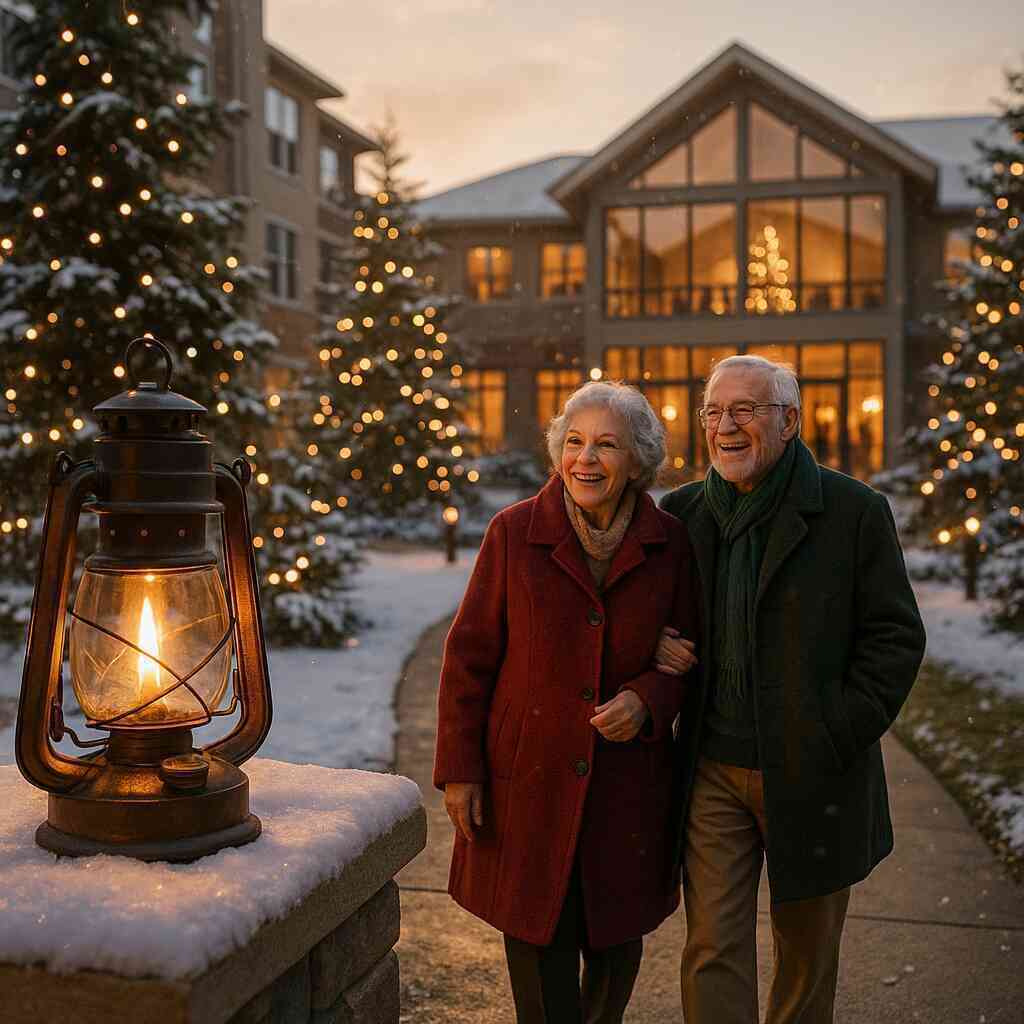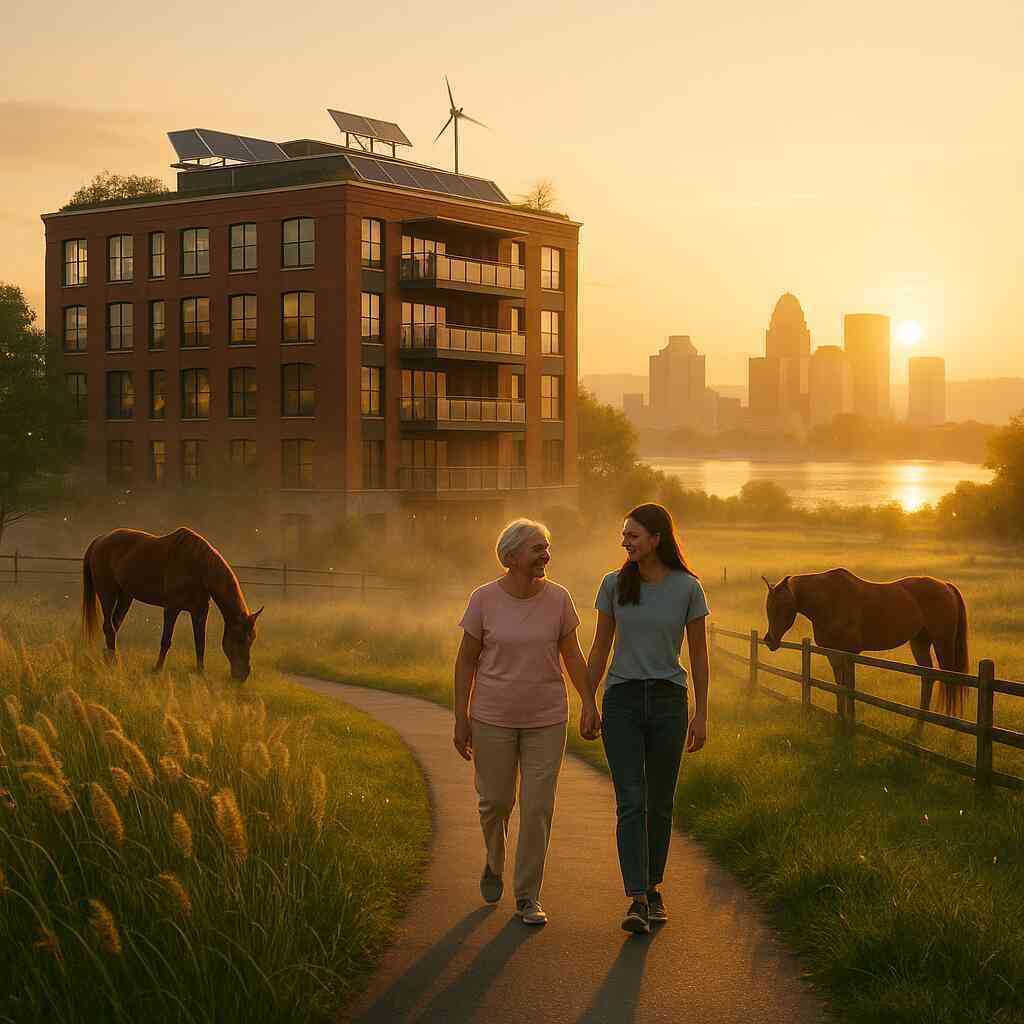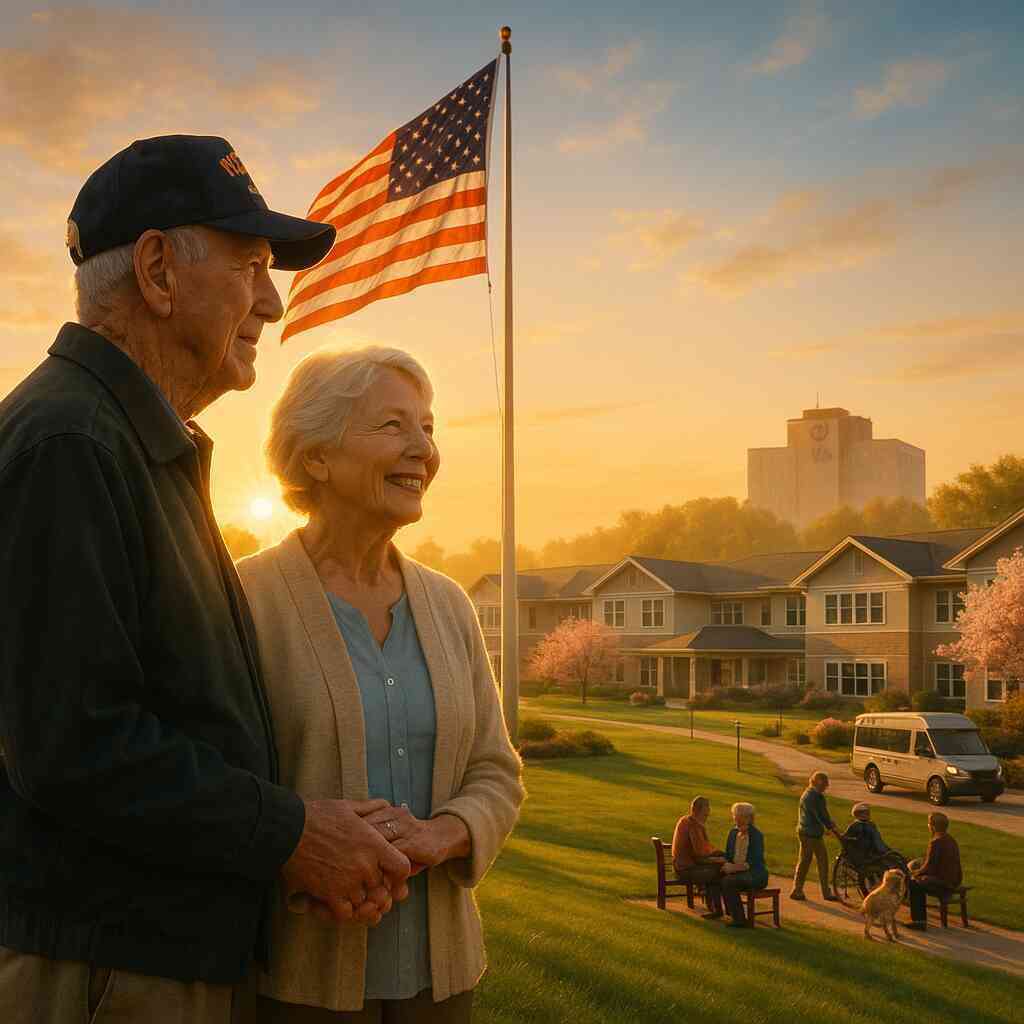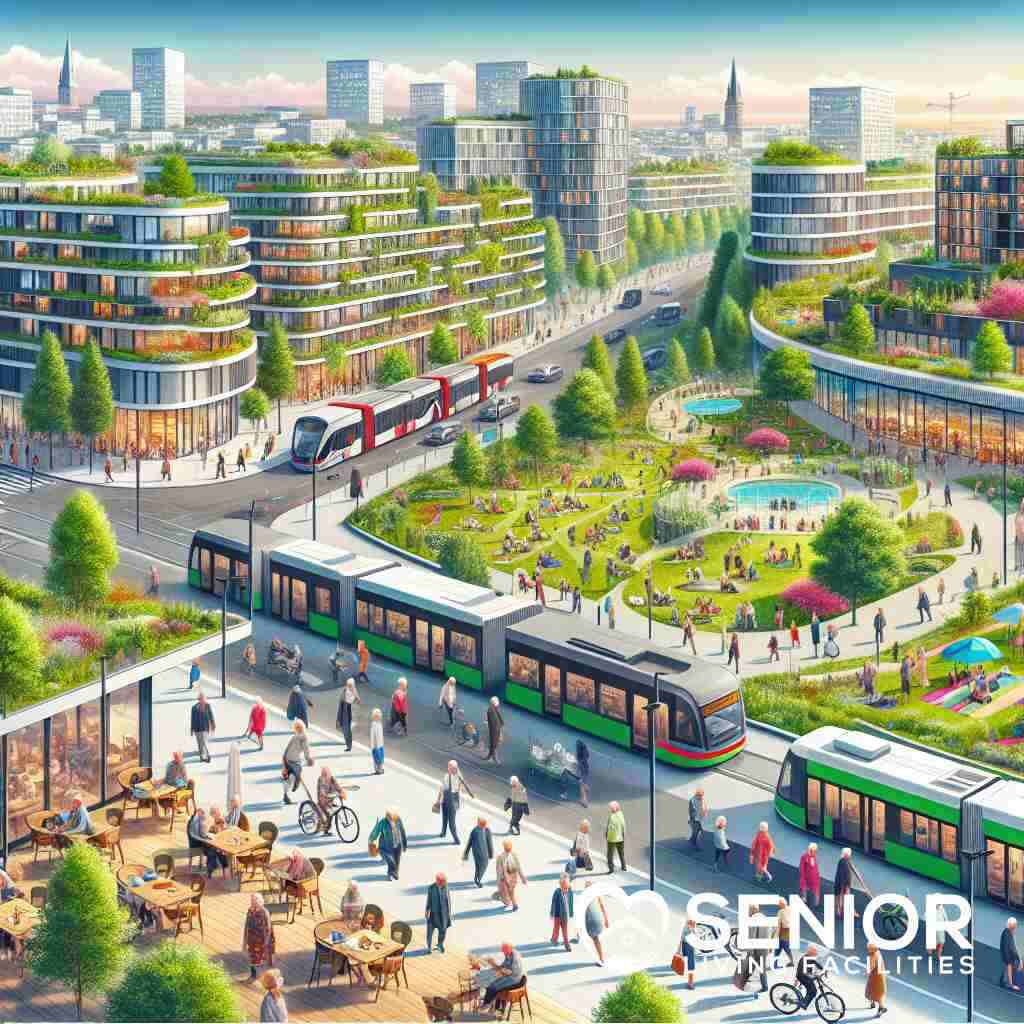
What Is the Relevance of Senior Living Facilities in Urban Areas
August 13, 2025
Navigating the Urban Landscape of Senior Living
The Evolution of Senior Living Facilities
Over the decades, senior living facilities have undergone a significant transformation, adapting to the changing needs and preferences of aging populations. Once primarily focused on basic care, these facilities now emphasize fostering independence, community engagement, and active lifestyles. As the aging population grows, the demand for innovative and well-equipped retirement communities in urban areas increases. This evolution reflects a broader societal shift towards understanding and catering to the nuanced requirements of seniors. With various amenities tailored to promote health and social connection, senior living facilities stand as a testament to the evolution of senior care.
Why Urban Areas? The Magnetism of Metropolitan Senior Living
Urban areas offer a pulsating environment that is increasingly attracting seniors who crave vibrancy and variety in their retirement years. The allure of the city lies in its accessibility to diverse services, including healthcare, shopping, and cultural activities. Urban settings provide seniors with unparalleled access to these amenities, which are further supported by robust public transportation systems. Moreover, urban life allows for seamless social interaction, an essential aspect of maintaining a fulfilling lifestyle. Understanding these dynamics is crucial for those seeking urban retirement living solutions that resonate with their aspirations for an enriching retired life.
Diverse Urban Senior Living Options: From Independent to Assisted
The landscape of senior living in cities is marked by its diversity, catering to a wide range of preferences and needs. Seniors have the option to choose between independent living environments and assisted living facilities, each offering distinct benefits tailored to the level of care required. Independent senior living environments focus on providing autonomy while fostering community through social activities and minimal assistance. Conversely, assisted living facilities are geared toward those who need more daily support while still maintaining a level of independence. To explore more about how these options compare, one can delve into the comparison of assisted and independent living choices, highlighting the nuanced offerings for urban seniors.
Advantages of City Living for Seniors
Vibrant Lifestyle: The Pulse of Urban Senior Living
The vibrant lifestyle offered by urban senior living facilities caters to seniors seeking dynamism and excitement during their retirement years. City living provides a unique tapestry of cultural experiences, dining options, and entertainment venues that is unparalleled in more rural environments. Seniors have the opportunity to actively participate in diverse events such as art exhibitions, musical performances, and community festivals, which are often within walking distance from their senior apartment rentals. This proximity to cultural richness ensures that life in a senior living facility becomes not just about care but about cultivating an enriched lifestyle. Most importantly, urban environments consistently introduce new experiences and interactions, which help maintain an active and stimulating routine for seniors.
Accessibility and Public Transportation: A Senior’s Gateway
A key advantage for seniors residing in urban areas is the convenience of robust public transportation systems. These networks provide a crucial gateway, allowing seniors to maintain independence by facilitating easy access to healthcare, shopping, and social venues. Senior living facilities in urban settings are strategically located to capitalize on these transportation links, reducing the reliance on personal vehicles and thus alleviating mobility concerns for older adults. This efficient system not only supports day-to-day living but also significantly contributes to a senior’s quality of life by enhancing their ability to explore the city and integrate into the community. With urban areas prioritizing public transportation routes, seniors enjoy seamless access to city amenities, reinforcing the value of senior living and urban transportation for maintaining autonomy and engagement.
Social Opportunities: Fostering Urban Senior Engagement
Urban senior living environments are rich with opportunities for social engagement, fostering meaningful connections among residents and the wider community. The bustling nature of city life creates a fertile ground for seniors to participate in clubs, interest groups, and volunteer activities specific to their passions and hobbies. These environments encourage interactions that combat isolation, promoting a supportive network essential for mental and emotional well-being. Urban amenities also facilitate casual meetings, whether in local parks, cafes, or through organized community events, helping seniors build strong social bonds. By residing in such lively settings, seniors significantly benefit from enhanced social connections that are crucial for their overall happiness and fulfillment in their retirement years. Embracing the urban lifestyle for active seniors not only enriches their social fabric but also nurtures a sense of belonging in vibrant metropolitan settings.
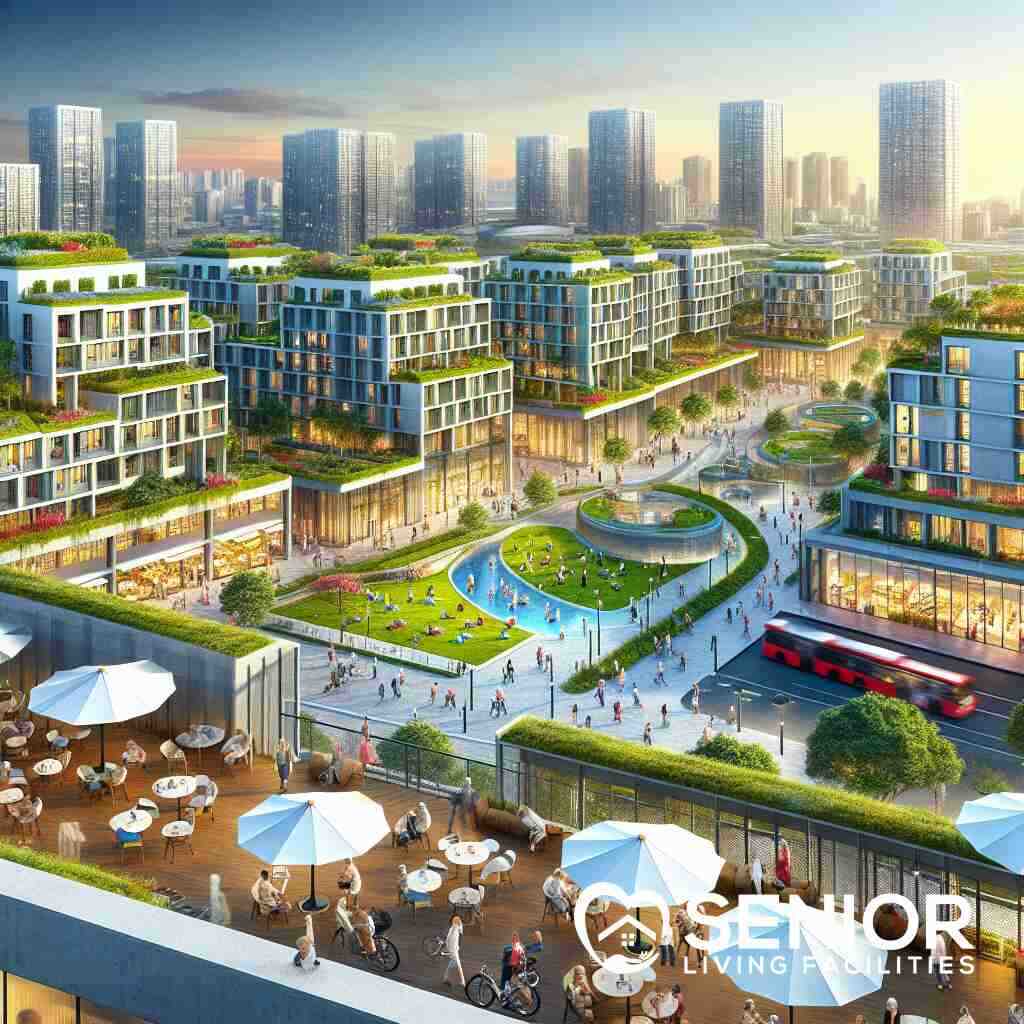
Urban Amenities and Resources: Enhancing Senior Quality of Life
Healthcare Access: Proximity to World-Class Medical Facilities
Urban areas are renowned for their proximity to world-class healthcare facilities, an essential feature for seniors seeking reliable care during their golden years. Living in metropolitan senior communities means that access to top-tier hospitals and specialists is just around the corner. This advantage cannot be overstated, as timely medical attention is crucial for maintaining health and well-being in the later stages of life. The urban setting ensures that seniors benefit from cutting-edge medical technology and experienced healthcare professionals dedicated to providing excellent care. Furthermore, having such resources nearby not only gives peace of mind to the seniors but also their families, knowing that emergency medical services are accessible within moments. To learn more about this benefit, consider access to world-class healthcare in cities, a fundamental factor enhancing seniors’ quality of life.
Cultural and Recreational Activities: Cultivating Active Lifestyles
Urban senior living facilities offer an unparalleled array of cultural and recreational activities that invigorate daily life. These activities are not just distractions; they’re integrative components that keep the spirit and mind engaged. From art museums and theaters to botanical gardens and historical tours, city environments equip seniors with hobbies and interests to explore. Participation in such events significantly enhances cognitive functions and creativity, contributing to a more active and satisfying lifestyle. Furthermore, recreational activities often cater to varying levels of physical ability, ensuring inclusivity across the board. By fostering an environment rich with diverse experiences, urban living encourages seniors to remain mentally agile and socially connected, perpetuating a vibrant lifestyle that keeps isolation at bay.
Senior Wellness Programs: Nurturing Urban Health
Wellness programs tailored specifically for seniors have gained traction within urban settings, focusing on holistic health management and proactive aging. These programs range from fitness classes designed to enhance mobility to dietary workshops aiming to promote healthier eating habits. Such initiatives are strategically implemented within senior living facilities, supporting a comprehensive approach to physical and mental wellness. In addition, these programs often include activities like meditation, yoga, and mindfulness sessions, which help manage stress and enhance emotional resilience. Urban environments, with their abundant resources, deliver these wellness opportunities directly to the doorstep of seniors, making it easier for them to participate and benefit. These initiatives play a pivotal role in supporting an enriched quality of life, making urban living an attractive option for those seeking to maintain health and vitality in their later years. For insights into how cities maximize wellness for seniors, exploring urban amenities for senior quality of life underscores the value of urban settings in nurturing senior health.
Challenges and Solutions in Urban Senior Living
Cost of Living Considerations in City Environments
The allure of metropolitan areas for seniors comes with the inevitable need to address the cost considerations for urban senior living. City environments are notorious for their elevated cost of living, which can impose financial challenges for seniors on fixed incomes. However, many urban senior living facilities offer creative solutions to combat these financial strains. By providing all-inclusive packages or tiered pricing options, these facilities aim to make city life more affordable. Moreover, some cities provide subsidies or financial incentives that further ease the transition into urban living. To gain a deeper understanding of how these costs are managed, delving into resources on cost considerations for urban senior living can offer valuable insights into making urban life accessible for seniors.
Ensuring Urban Senior Safety and Security
Safety and security are paramount when considering senior living options in bustling urban landscapes. Urban safety for elderly residents is tackled through advanced security measures in senior living facilities, such as 24-hour surveillance, secure entrances, and emergency alert systems. These features play a critical role in providing peace of mind for both residents and their families. Additionally, city-wide initiatives focused on improving urban safety also greatly benefit seniors. For example, increased police presence and neighborhood watches can deter crime and facilitate a safer community. To delve further into the strategies for enhancing senior safety, consider examining how urban safety for elderly residents is optimized through both private and public endeavors.
Urban Planning for Age-Friendly Cities
With the growing aging population, the importance of urban planning for age-friendly cities has become increasingly prominent. Cities are recognizing the need to design environments that cater to the specific requirements of seniors. This includes creating accessible public spaces, integrating healthcare facilities within residential areas, and ensuring seamless public transportation. Urban planners are also focusing on mixed-use developments that combine residential, commercial, and recreational spaces to enhance convenience for seniors. The nuanced approach to making cities more age-friendly not only improves the daily lives of seniors but also enriches the community at large. By gaining an understanding of how urban infrastructure is adapting to these changes, understanding urban planning for seniors offers a compelling look at how cities are striving to create inclusive environments for all ages.
Conclusion
The Future of Senior Living in Urban Areas
The future of senior living in urban areas is poised for exciting developments as cities evolve to become more inclusive for the aging population. Metropolitan areas are turning towards smart city design for senior living, integrating advanced technology and sustainable infrastructure to enhance safety and comfort for elderly residents. These innovations focus on creating environments that promote wellness and connectivity among seniors, allowing them to harness the benefits of urban senior communities. As we anticipate these advancements, cities are likely to see a rise in mixed-used developments and green spaces designed specifically to cater to senior residents. This strategic focus on urban development signifies a move towards crafting age-friendly cities where seniors can thrive, marking an essential shift in urban planning priorities.
Ensuring a Fulfilling Urban Life for Seniors
Ensuring a fulfilling urban life for seniors involves a multifaceted approach that prioritizes health, engagement, and accessibility. Urban areas must continue to enhance their urban amenities for active seniors, providing a broad spectrum of activities and services that promote vibrant, independent lifestyles. A fulfilling urban life also hinges on improving public transportation solutions, ensuring that seniors can navigate effortlessly and maintain critical connections to community resources. Active efforts in urban planning and community development will further empower seniors, allowing them to retain control over their lifestyles and participate actively in cultural and social events. Ultimately, the goal is to create inclusive environments where seniors feel valued and supported, reinforcing their independence in bustling cityscapes. Cities that prioritize these initiatives will undeniably emerge as leaders in senior living solutions, setting a standard for how urban communities can accommodate and nurture an aging populace. By exploring such forward-thinking strategies, cities can anticipate an enriching transformation in the quality of life for their senior residents.
Frequently Asked Questions
Question: How does urban senior living enhance the quality of life for seniors?
Answer: Urban senior living facilities significantly enhance the quality of life for seniors by offering a plethora of amenities and resources that cater specifically to their needs. These metropolitan senior living communities provide easy access to world-class healthcare facilities, diverse cultural events, and robust public transportation systems. The dynamic environment of city living for seniors encourages an active lifestyle, allowing residents to engage in social activities and maintain independence. Moreover, urban amenities for seniors in cities ensure that they have close proximity to shopping centers, dining options, and recreational opportunities, enriching their daily experiences.
Question: Why are senior living facilities crucial in urban areas?
Answer: Senior living facilities are crucial in urban areas primarily due to the accessibility and convenience these regions provide. Urban retirement communities offer a vibrant lifestyle that appeals to the aging population in cities. With the benefits of senior living in city environments, seniors can enjoy enriched cultural experiences, superior healthcare accessibility, and enhanced social connections. The urban landscape fosters community engagement for seniors, helping to combat isolation and promote mental well-being. These factors are pivotal in making senior living solutions in urban settings not just about care, but about nurturing fulfillment and independence for seniors.
Question: What makes the relevance of senior living facilities in urban areas important, as discussed in the blog What Is the Relevance of Senior Living Facilities in Urban Areas?
Answer: The blog What Is the Relevance of Senior Living Facilities in Urban Areas highlights the increasing demand for senior housing in urban areas due to their unique benefits. Metropolitan senior living facilities not only provide tailored amenities that meet the diverse needs of the aging population but also integrate seamlessly with urban infrastructure. The strategic location of these facilities ensures that seniors have access to medical care for seniors and enjoy an active urban senior lifestyle. By opting for urban senior living, seniors can retain their independence and remain engaged, all while benefiting from the senior-friendly urban design that prioritizes their safety and comfort.
Question: How do urban senior living options support independent and assisted living preferences?
Answer: Urban senior living options are diverse, catering to both independent and assisted living preferences by offering tailored solutions that match each individual’s lifestyle and care requirements. Independent living communities provide seniors with autonomy within a supportive environment that encourages social connections and an active lifestyle for seniors. Conversely, assisted living facilities in urban areas offer additional support and care, ensuring that those who require more assistance can still enjoy the benefits of city life. By bridging the gap between autonomy and necessary care, urban senior living solutions effectively meet the multifaceted needs of the aging population in cities.
Question: What role does public transportation play in senior living solutions within urban settings?
Answer: Public transportation plays a vital role in enhancing senior living solutions within urban settings by providing seniors with the means to maintain their independence and navigate the city with ease. Urban areas boast efficient public transportation systems that connect senior living communities to essential services, such as healthcare, shopping, and cultural activities. These transit options relieve seniors of the reliance on personal vehicles, thereby reducing mobility concerns and promoting a sense of freedom and autonomy. Urban senior safety is also heightened, as public transportation helps seniors stay engaged with their communities, allowing them to experience all that city life has to offer unimpeded.

